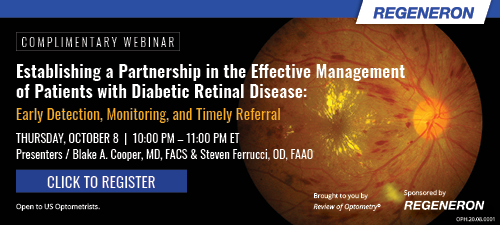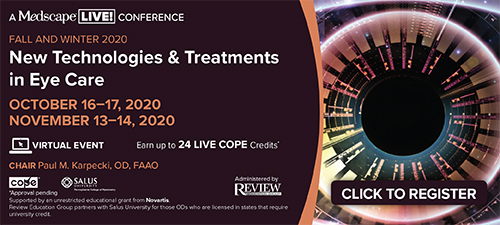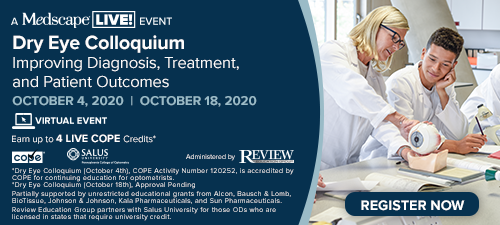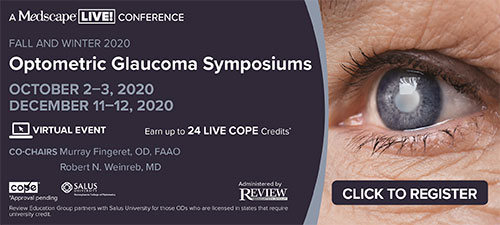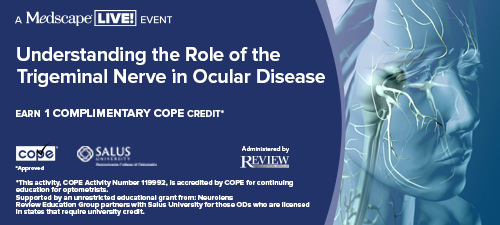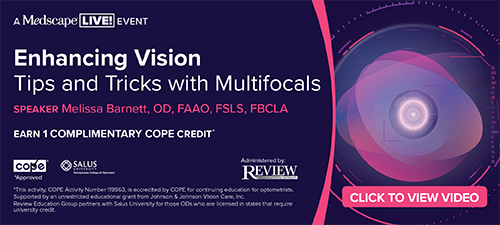
A
weekly e-journal by Art Epstein, OD, FAAO
Off the Cuff: Why Optometric Scope Expansion is Good for Ophthalmology
For reasons that increasingly make less and less sense, organized ophthalmology has consistently seemed compelled to marginalize, denigrate and constrain optometric practice. In truth, only a thin veneer of patient protectionism veils the real motivation of a small and rapidly shrinking number of ophthalmologists: arrogance, ego and economics. I imagine that facing declining membership, the Academy of Ophthalmology recognizes the value of a common enemy in chumming the waters of discord. A recent call to action sent out by the AAO bemoaned the dramatic drop in support for their Surgical Scope Fund. While the AAO blamed the shortfall on COVID, I suspect that that the real reason is that more and more ophthalmologists are realizing that optometrists and even reasonable scope expansion are not a threat. The battle against optometry has also historically been a losing one. While organized ophthalmology has been fighting this costly and pointless conflict, optometry has become the primary provider of medical eye care in the US. Perhaps the pinnacle of this anti-OD folly was the multimillion-dollar Safe Surgery Arkansas referendum initiative. Thrown off the ballot two weeks ago, this costly boondoggle reflects the desperation and depths that a small number of MDs were willing to go to subvert the public will. In most settings trying to control another independent profession would be considered restraint of trade or antitrust, but so far, organized ophthalmology has remained mostly undeterred. Both common sense and common need suggest that it is time that this stop. The reality is optometric scope expansion has solidified OD-MD relations and allowed for synergy based on mutual respect and cooperation. Today, more ODs and MDs are working together than ever before, and it is the improved training and expanded scope of optometric practice that has facilitated this tectonic shift. Continuing to battle over turf is a losing proposition for both optometry and ophthalmology, and more importantly, for our patients. The need for détente and cooperation has never been greater, and is likely to dramatically increase over the coming months and years. The Academy of Ophthalmology and the American Optometric Association must explore synergy. Clearly our two professions are stronger together, and continuing to fight each is senseless. If our organizations are unable to see their way to a collaborative future, perhaps it’s time that the visionaries among us find a path toward peace.
|
|||||
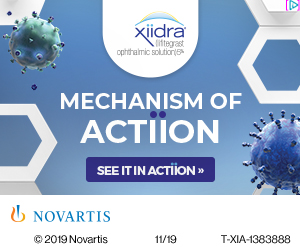 |
||
| Contrast-sensitivity Function and Photo Stress-recovery Time in Prediabetes | ||||
The purpose of this study was to assess contrast sensitivity and macular function testing in prediabetes. Participants ages 25 to 45 years with or without diabetes were enrolled and classified as normal, prediabetic and diabetic based on their HbA1C values. They underwent a comprehensive eye examination, and those with diabetic retinopathy, cataract, glaucoma and high myopia were excluded. Participants with best-corrected visual acuity of 0 logMAR were included. Contrast-sensitivity function (CSF) was measured using a Pelli-Robson chart, and photo stress-recovery time (PSRT) assessed using direct ophthalmoscopy for the 70 eligible participants. Mean values were compared among the three groups. In the 70 participants, mean CSF was 1.71±0.10, 1.64±0.11 and 1.61±0.08 log units in the normal, prediabetic and diabetic groups, respectively. Similarly, PSRT was found to be 35.80 seconds, 41.63 seconds and 47.77 seconds in the normal, prediabetic and diabetic groups, respectively. |
||||
SOURCE: Chande PK, Raman R, John P, et al. Contrast-Sensitivity function and photo stress-recovery time in prediabetes. Clin Optom (Auckl). 2020;12:151-5. |
||||
 |
||
| Performance and Safety of the Extended Depth of Focus Implantable Collamer Lens (EDOF ICL) in Phakic Subjects with Presbyopia | ||||
This study evaluated the performance and safety of the Extended Depth of Focus Implantable Collamer Lens (EDOF ICL) for improvement of uncorrected near, intermediate and distance visual acuity in phakic subjects with myopia and presbyopia. Presbyopic subjects who required an EDOF ICL in the range of -0.50D to -18.00D, exhibited ≤ 0.75D refractive astigmatism and required from +1.00 to +2.50D reading add were implanted bilaterally. Assessments at six months included uncorrected near, intermediate and distance visual acuities, defocus curves, contrast sensitivity, responses to the National Eye Institute Refractive Error Quality of Life Questionnaire and a Task Assessment Questionnaire.
|
||||
SOURCE: Packer M, Alfonso JF, Aramberri J, et al. Performance and safety of the extended depth of focus implantable collamer lens (EDOF ICL) in phakic subjects with presbyopia. Clin Ophthalmol. 2020; Sep 18;14:2717-30. |
||||
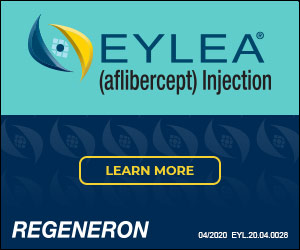 |
||
| Secondary Angle-closure Glaucoma as an Ocular Presentation of Systemic Lupus Erythematosus: A Case Report | ||||
Systemic lupus erythematosus (SLE) is a chronic idiopathic autoimmune disease. SLE can involve almost any part of the eyes. However, bilateral angle-closure glaucoma due to lupus choroidopathy that is accompanied by polyserositis and nephropathy is rare. Researchers reported a 21-year-old woman whose clinical manifestations were diagnosed as bilateral angle-closure glaucoma caused by ciliochoroidal effusion. Subsequently, SLE and lupus nephritis were diagnosed on the basis of malar rash, photosensitivity, proteinuria, positive anti-Smith and anti-DNA antibodies, and a renal histopathological biopsy. After one month of treatment with steroids and immunosuppressive drugs, the patient's intraocular pressure returned to normal, visual acuity improved and lupus nephritis was effectively controlled. Researchers wrote that bilateral secondary acute angle closure caused by SLE choroidal disease can be an ocular manifestation of SLE, and is usually accompanied by polyserositis and nephropathy. High-dose steroids and immunosuppressive therapy should be immediately and actively provided for this condition. |
||||
SOURCE: Hou X, Pan W, Wang A, et al. Secondary angle-closure glaucoma as an ocular presentation of systemic lupus erythematosus: a case report. J Int Med Res. 2020;48(9):300060520959492. |
||||
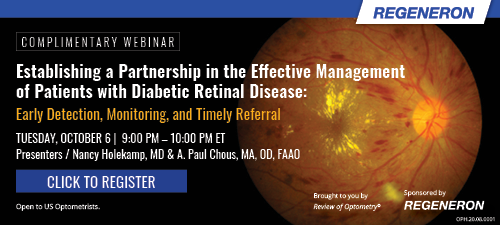 |
||
| News & Notes | ||||||||
| AAOF Announces Recipients of Allergan Foundation Research Grant, David and Diane Goss History Fellowship, and Beta Sigma Kappa Research Fellowship The American Academy of Optometry Foundation, in partnership with the Allergan Foundation, announced two grant recipients in the areas of the anterior segment and glaucoma. Suzanne MJ Fleiszig, OD, PhD, FAAO, a professor of optometry and vision science, microbiology, and infectious disease and immunity at the University of California, Berkeley School of Optometry, is the recipient of the Allergan Foundation Grant in the area of the anterior segment. Stacey S. Choi, PhD, FAAO, an associate professor at The Ohio State University, Department of Ophthalmology and Visual Science, Havener Eye Institute, is the recipient in the area of glaucoma. Read more. In addition, the AAOF announced Tiong Peng Yap, OD, PhD, FAAO, a private practice fellow at the IGARD Group in Singapore, is the David and Diane Goss Optometry History Fellowship recipient. Dr. Yap will receive a $1,000 fellowship to further his research on the history of optometric education in Singapore. Read more. As well, the AAOF, in collaboration with the Beta Sigma Kappa International Optometric Honor Society, announced Jack Phu, PhD, FAAO, is the recipient of the Beta Sigma Kappa (BSK) Research Fellowship. Dr. Phu is an associate lecturer at the Centre for Eye Health, School of Optometry and Vision Science, at the University of New South Wales, Australia. This award will fund Dr. Phu’s project on “Phenotyping open-angle glaucoma subtypes to determine disease prognosis.” Read more.
|
||||||||
| FDA Approves B+L Alaway Preservative-free Ophthalmic Solution, 0.035% Bausch Health Companies, Bausch + Lomb and Eton Pharmaceuticals announced the FDA approved Alaway Preservative Free (ketotifen fumarate) ophthalmic solution 0.035%, antihistamine eye drops (EM-100), as the first over-the-counter, preservative-free formulation eye drop approved to temporarily relieve itchy eyes due to pollen, ragweed, grass, animal hair and dander. Preservatives commonly used in eye drops can cause allergic reactions in some people that can lead to redness, irritation, itching or tearing. Alaway Preservative Free is formulated to relieve eye itch within minutes and can provide up to 12 hours of eye itch relief with one dose. Read more.
|
||||||||
| Eaglet Announces Software Upgrade Eaglet Eye announced the global release of the Eye Surface Profiler (ESP) software version 5.0XT. This new software elevates the ESP when dealing with corneoscleral irregularities (e.g., PMD, pinguecula). Also DirectConnect functionality has been extended with five more labs: Bausch + Lomb, ScanFitPRO, AccuLens, X-Cel and AVT, in addition to BostonSight and Blanchard. Read more.
|
||||||||
| FDA Accepts Aerie’s IND Application for AR-15512 (TRPM8 Agonist) Eye Drop for DED Aerie Pharmaceuticals announced the FDA accepted its Investigational New Drug Application for AR-15512 (TRPM8 agonist) eye drop for dry eye, enabling Aerie to initiate clinical studies in the treatment of dry eye. The active ingredient in AR-15512 is a selective agonist of the TRPM8 cold thermoreceptor ion channel that regulates tear production and blink rate. By stimulating these processes, TRPM8 agonists have the potential to restore tear film volume and reduce ocular discomfort in patients with dry eye. Read more.
|
||||||||
| First Patients Dosed in Ocular Therapeutix Phase II OTX-CSI Trial Ocular Therapeutix announced the first patients were dosed in its Phase II clinical trial of OTX-CSI (cyclosporine intracanalicular insert) for the treatment of dry eye disease. The Phase II clinical trial is a U.S.-based, randomized, masked, multicenter trial evaluating two different formulations of OTX-CSI with vehicle insert in approximately 105 subjects who will be followed for a period of 16 weeks. Read more.
|
||||||||
AdaptDx Pro by MacuLogix Receives Medical Device Licence from Health Canada MacuLogix announced that Health Canada issued a medical device licence for the AdaptDx Pro dark adaptometer, and the device is now available for purchase in Canada (through LUVO Medical Technologies) and through a distribution partner Clarion Medical Technologies. Read more.
|
||||||||
Visus Launches Clinical Development Program for Presbyopia Eye Drop Visus Therapeutics initiated a clinical development program for a novel eye drop designed to restore the loss of near vision associated with presbyopia. Visus’ lead product candidate is Brimochol, a proprietary formulation that combines two well-studied, FDA-approved pharmaceuticals: carbachol and brimonidine tartrate. Read more.
|
||||||||
|
||||||||
|
||||||||
|
Optometric Physician™ (OP) newsletter is owned and published by Dr. Arthur Epstein. It is distributed by the Review Group, a Division of Jobson Medical Information LLC (JMI), 19 Campus Boulevard, Newtown Square, PA 19073. HOW TO ADVERTISE |


